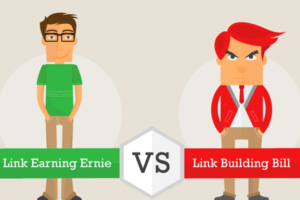Content Attributes
When it comes to optimizing the site in SEO terms, there are really many parameters to consider: one of them, without a doubt, is the internal links.
Internal links are those links that connect the various pages of a website together and are as important for SEO optimization. At least as are the external backlinks used for link building.
Properly connecting the site is also essential for indexing. But a strategy with meaning adopted so as not to waste a good opportunity to rise in the ranking. Although often you don’t pay attention to internal links as well as external ones, the first ones are really important.
Not only for a matter of site usability and user experience but also for indexing. The objectives of the internal links are to facilitate the search engines ‘ crawling of the site and to find all its individual pages, to make the site connected and integrated, making it easier to navigate, and to create value on the site.
Tips for maintaining internal links: here are the ones
Therefore, some useful advice must be followed to learn how to manage internal links properly, without underestimating them. And pay attention to over-optimization, as to the continuous reference to a single page or to the use of anchor text all the same: Google could penalize you.
A coherent, logical, organized structure of internal links greatly improves the user experience and Google rewards sites. Where the user is comfortable and where he remains for a long time.
The user first of all
The care of the user experience. The first thing to consider when setting up an internal linking strategy is that the user experience must dominate the scene. In the sense: make sure that the users who are on the site are also happy to stay there. Example of some behavior that discourages users from browsing websites and makes the rebound percentage high: very short content, medium-long content but without meat on the fire, pop-up windows that continuously interrupt browsing making the experience unpleasant. These are some of the reasons why some users remain on the site only a few moments. Usability has a direct link with indexing because Google rewards sites that are well set up.
The contents must follow a hierarchical scale
That’s right: they are not all-important in the same way and are often logically consequential. You must bring the user to follow the ladder you have set up so that his navigation on the site. Allowed by internal links well organized and consistent. To do this, do not say everything about a topic in a single article. But make sure that the user is pushed to continue on another.
Do not use too many links on a page
They can confuse the user and certainly do not help him understand where to go and how to behave (and in any case, they are not useful for indexing at all).
Don’t spam internal links
Don’t spam internal links between pages and pages that have little to do with it. Try to concentrate on the links where it really matters. On pages that you believe are fundamental and that has more value for your website.
Create quality content
Avoid copying and pasting your own articles, even if only in part, because Google penalizes content that is not original. Try to create the content of suitable length and well divided into paragraphs. Personalize the site and try to avoid duplication.



